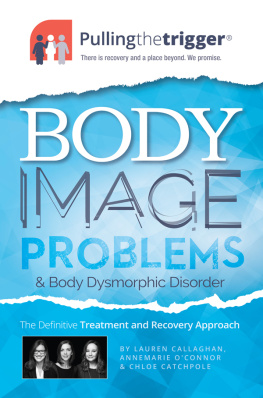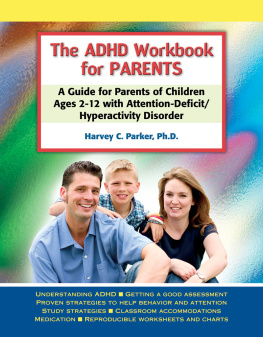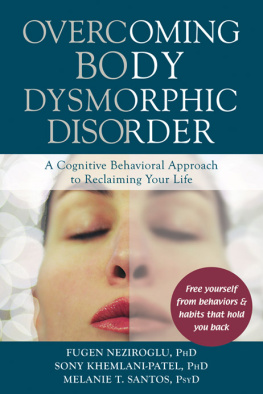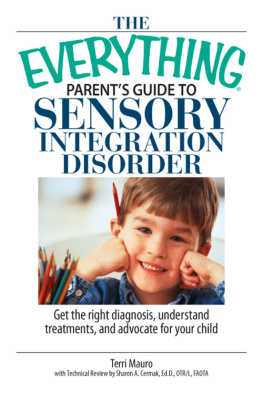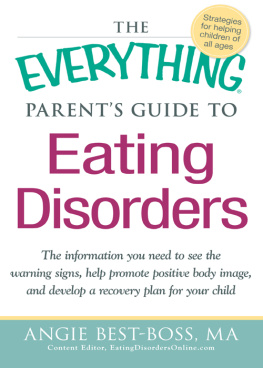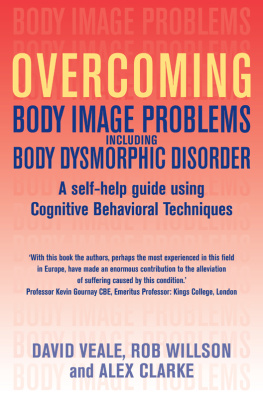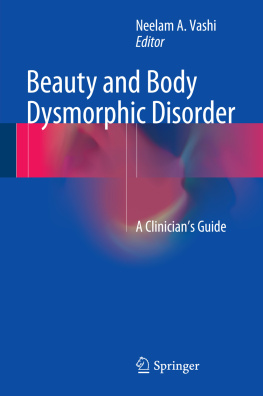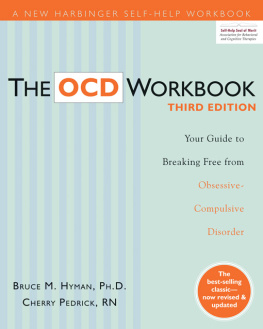Nicole Schnackenberg - The Parents Guide to Body Dysmorphic Disorder
Here you can read online Nicole Schnackenberg - The Parents Guide to Body Dysmorphic Disorder full text of the book (entire story) in english for free. Download pdf and epub, get meaning, cover and reviews about this ebook. year: 2020, publisher: Jessica Kingsley Publishers, genre: Home and family. Description of the work, (preface) as well as reviews are available. Best literature library LitArk.com created for fans of good reading and offers a wide selection of genres:
Romance novel
Science fiction
Adventure
Detective
Science
History
Home and family
Prose
Art
Politics
Computer
Non-fiction
Religion
Business
Children
Humor
Choose a favorite category and find really read worthwhile books. Enjoy immersion in the world of imagination, feel the emotions of the characters or learn something new for yourself, make an fascinating discovery.
- Book:The Parents Guide to Body Dysmorphic Disorder
- Author:
- Publisher:Jessica Kingsley Publishers
- Genre:
- Year:2020
- Rating:5 / 5
- Favourites:Add to favourites
- Your mark:
- 100
- 1
- 2
- 3
- 4
- 5
The Parents Guide to Body Dysmorphic Disorder: summary, description and annotation
We offer to read an annotation, description, summary or preface (depends on what the author of the book "The Parents Guide to Body Dysmorphic Disorder" wrote himself). If you haven't found the necessary information about the book — write in the comments, we will try to find it.
The Parents Guide to Body Dysmorphic Disorder — read online for free the complete book (whole text) full work
Below is the text of the book, divided by pages. System saving the place of the last page read, allows you to conveniently read the book "The Parents Guide to Body Dysmorphic Disorder" online for free, without having to search again every time where you left off. Put a bookmark, and you can go to the page where you finished reading at any time.
Font size:
Interval:
Bookmark:

The Parents Guide
to Body Dysmorphic
Disorder
How to Support Your Child,
Teen or Young Adult
Nicole Schnackenberg,
Benedetta Monzani and Amita Jassi
Foreword by Rob Willson and David Veale

Rob Willson and David Veale
We have now both been involved in the research and treatment of body dysmorphic disorder (BDD) for a quarter of a century. When we began, the term body dysmorphic disorder, or BDD, was rarely heard in mainstream psychiatry, let alone in general practice. Often, even if someone was given a diagnosis of BDD, they would be unlikely to be offered effective treatment. This book, offering clear practical advice to parents on how to support a young person with BDD, is a reflection of just how far the field has come. Not only do we now have a better understanding of BDD, and of how to treat the condition; we also have specialist services for both adults and young people in the UK.
BDD is best understood as a distressing and disabling preoccupation with perceived defects or flaws in the appearance, usually lasting several hours a day. Individuals with BDD tend to check their appearance repeatedly and try to camouflage or alter the defects they are preoccupied with, frequently leading to demands for cosmetic and/or dermatological procedures. Parents are frequently perplexed because they can see nothing out of the ordinary in their childs appearance. They regularly tell us they feel frustrated that their attempts to reassure their child seem to fall on deaf ears. Causing significant anxiety and shame, BDD makes sufferers excessively self-conscious and often leads to substantial interference with their ability to function socially and educationally. This book responds to the needs of parents of young people with BDD who are often desperate for good information on what they should (and should not) do to best help their loved one.
It is important for parents to understand that their childs BDD is neither the childs fault nor their own. The causes of BDD are complex, and have yet to be fully unravelled. What we do know is that it is possible for parents to set helpful conditions for their child to recover and that there are certain reliable dos-and-donts that support change. One of the key aspects is to understand that BDD is a product of an overloaded brain. The young person with BDD simply cannot see the wood for the trees; they are unable to see their appearance objectively, no matter how many times they are told or reassured that they look okay. It is only as their preoccupation (and therefore brain-overload) decreases that their objectivity can return. It may seem like a small thing when dealing with such a big issue but avoiding the trap of getting bogged down in repeated and unproductive conversations about appearance can be very helpful. A parent who never loses sight of the wider interests and attributes of their child can be a great asset. Even a few minutes of engaging the young person externally away from their appearance concerns can be helpful. Each minute stolen away from appearance preoccupation and diverted into the outside world is a small but significant victory.
The authors of this parents guide to BDD are experts on BDD in young people and the advice given here is rounded by many years of experience. Schnackenberg, Monzani and Jassi guide the reader through a journey of BDD diagnosis and treatment. They advise on how to respond to their loved ones BDD-driven behaviours, as well as managing the impact and mood difficulties that typically accompany BDD.
The authors give helpful advice on supporting a young person and working with teachers on how to help the young person to succeed in their education. While aimed at parents, the content of this book will be highly relevant to friends, partners, siblings and anyone who cares for a young person with BDD. has particular relevance for educational professionals.
In this book, you will find crucial guidance on finding the correct help for many, this is one of the most difficult steps on the road to recovery. There is also advice about supporting a young person through psychological and medical treatment. Contemporary issues regarding managing a young persons use of social media are also addressed.
Having a child with BDD can be an extremely strenuous experience for parents. Helpfully, advice can be found for parents within these pages on how to look after their own wellbeing as well as the wellbeing of their loved one.
Of particular note are the contributions in this book from parents who have first-hand experience of taking care of a child or young person with BDD, and from young people with BDD themselves about their lived experience. Real life experience of living with, and ultimately breaking free from, BDD is vastly helpful to others. We thank these contributors for offering hope, encouragement and advice to parents going through a very challenging time.
Body dysmorphic disorder (BDD) most commonly emerges in the adolescent years and can have a devastating impact on families. Parents and carers typically bear much of the burden. Parents often tell us they feel confused about why BDD came into their childs life, what BDD is and isnt, how to talk about BDD with both their child and others, and how to access and support their child through treatment. Other common struggles parents share include difficulties with supporting their child through education; navigating their childs requests for physical treatments such as cosmetic surgery, dentistry and dermatology; and taking care of themselves and other family members when swept away by the demands and emotional turmoil BDD can bring.
We understand the tremendous challenges that come along with being a parent of a child or young person struggling with BDD. We have written this book to both offer practical support and guidance and to help you to know that you are not alone in your experiences.
The information in these pages will be relevant to you whether or not your child has received an official diagnosis of BDD. This book can be read at various stages of the journey, including before, during and after treatment has been accessed. addresses supporting your child through the treatment itself, including how you can be a recovery agent in this process.
This book has been written in such a way that it is possible to dip in and out of the various chapters depending on what you require support with at any given time. However, we recommend you ideally read the first four chapters before going into the others as they offer an overview of what BDD is, how BDD can affect the young person and those supporting them, common struggles that go alongside the experience of BDD and considerations of how to respond to various BDD-related behaviours. These topics offer a foundation for the subject areas covered in subsequent chapters.
Some of the chapters may feel rather difficult to read; particularly, perhaps, , which covers self-care for parents, is recommended if you are feeling strongly affected by the content in any of the other chapters.
There is a fair amount of subject-related vocabulary for BDD, particularly when it comes to thinking about treatment. We have included a Glossary of Terms, which you can find at the back of the book, to aid your understanding of any unfamiliar concepts. We hope this shall be supportive to your experience of reading this book.
In addition to the resources and ideas offered in the main body of the text, we have also included various helplines and avenues of support in the Resources section at the back of the book, including some further reading which may be of interest to you. We particularly wish to highlight the online support group for parents of young people with BDD run by OCD Action. This group takes place over Skype and can, therefore, be accessed from any geographical area.
Font size:
Interval:
Bookmark:
Similar books «The Parents Guide to Body Dysmorphic Disorder»
Look at similar books to The Parents Guide to Body Dysmorphic Disorder. We have selected literature similar in name and meaning in the hope of providing readers with more options to find new, interesting, not yet read works.
Discussion, reviews of the book The Parents Guide to Body Dysmorphic Disorder and just readers' own opinions. Leave your comments, write what you think about the work, its meaning or the main characters. Specify what exactly you liked and what you didn't like, and why you think so.


